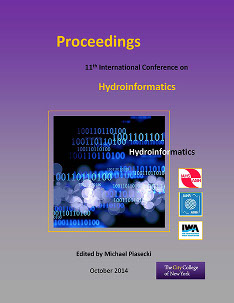Document Type
Presentation
Publication Date
8-1-2014
Abstract
Hydraulic models have been widely used in the design and operation of water distribution system (WDSs). The models enable planning for possible changes in the system under a wide range of conditions. Under abnormal operating condition, for instance, WDSs become pressure deficient and unable to satisfy demand fully. In such circumstances, pressure dependent models are suitable to quantify the shortfall in flow and pressure accurately for crucial decision-making. Most recently, a pressure dependent extension of the renowned EPANET hydraulic simulator was developed to enable modelling of pressure deficient networks. The model has an integrated pressure dependent demand (i.e. nodal flow) function coupled with a line search and backtracking procedure to facilitate convergence. Extensive verifications were conducted on the model using benchmark and real life networks and good modelling performances were accomplished. The model was combined with multi-objective genetic algorithm for optimisation of design, rehabilitation and operation of WDSs. It generated superior results for benchmark as well as real life networks in terms of cost, hydraulic performance and computational time in reference to previous solutions. It has also been utilised for water quality modelling of real life networks. Overall, the model has not experienced convergence problems when executing the various simulations. Having demonstrated the robustness and benefits of the model previously including seamless integration in genetic algorithms, it would be greatly beneficial on investigating ways of improving the algorithm further. In this work, the line search and backtracking procedure of the algorithm has been improved. This has improved the robustness further by enhancing greatly the computational properties for low flow conditions and increasing the algorithm’s consistency over a wider range of operating conditions. Extended period simulations were executed on real life network considering source head variations and pipe closure conditions.



Comments
Session R51, Water Distribution Networks: Design Criteria